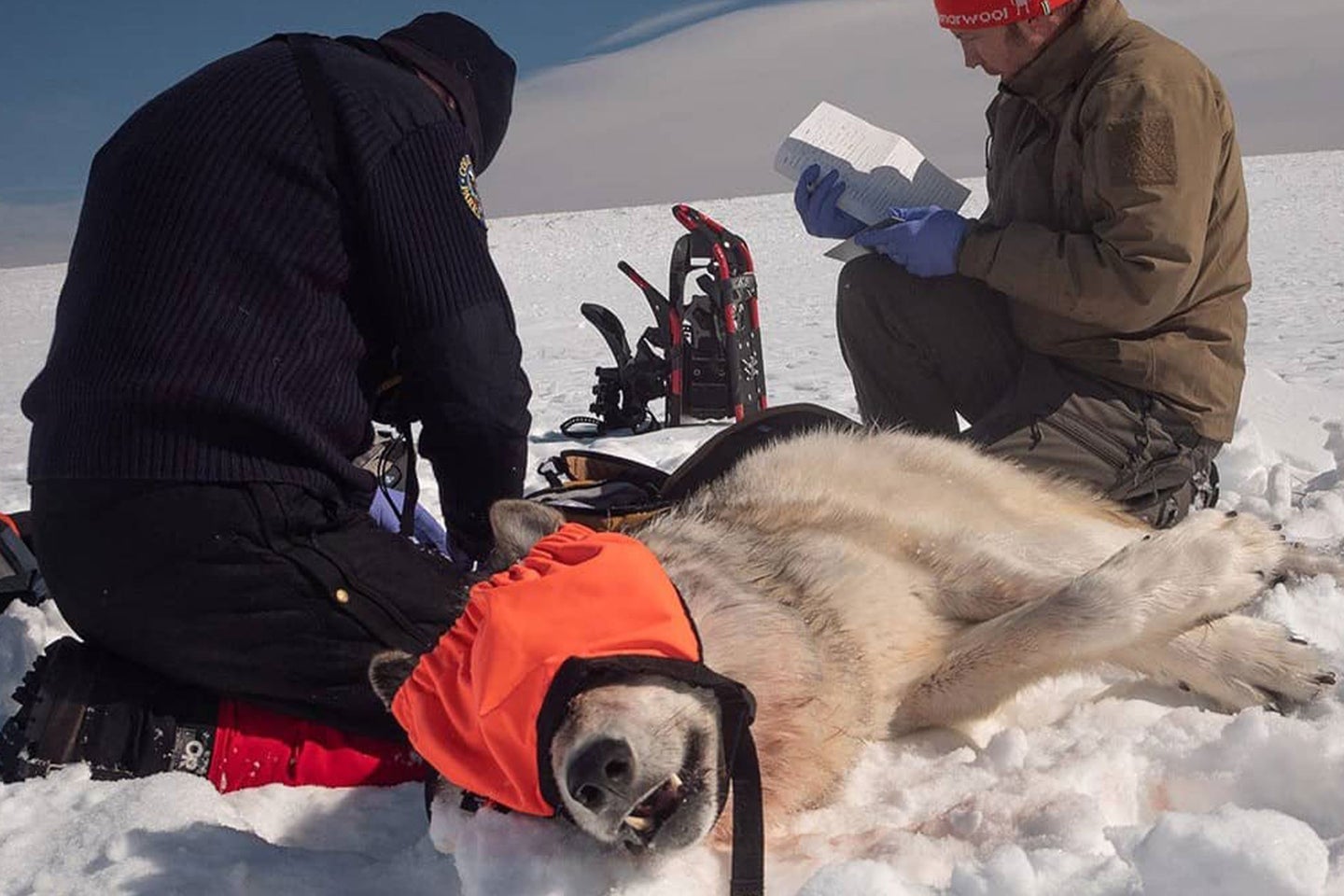Oregon Will Supply Wolves for Colorado’s Controversial Wolf Reintroduction Plan

Oregon is home to an estimated 178 wolves. CPW, Jerry Neal.
Late last week, Colorado Parks & Wildlife (CPW) said it will acquire up to 10 gray wolves from the Oregon Department of Fish & Wildlife (ODFW) that officials will then release on the Centennial State’s Western Slope, west of the Continental Divide. The agreement between CPW and ODFW is part of an ongoing effort to bring stable populations of wolves back into Colorado. It’ll allow Colorado to begin releasing wolves on or before December 31, 2023—a deadline approved three years ago when a portion of the state’s electorate voted to reintroduce wolves.
“In 2020, Colorado voted to reintroduce wolves to our great state by the end of 2023,” said Colorado Governor Jared Polis in a CPW press release issued last Friday. “Colorado Parks and Wildlife and our administration have worked tirelessly to safely reintroduce wolves consistent with that voter-mandated deadline.”
When Colorado Proposition 114 passed back in November 2020, it got through on an extremely slim margin. Of Colorado’s 64 counties, only 13 voted in favor of wolf reintroduction, with most of the support coming from highly-populated urban centers along the state’s Front Range—far from where CPW plans to reintroduce the species. The Rocky Mountain Elk Foundation and other hunting-focused conservation organizations opposed the initiative on grounds that it took what should have been a science-based management decision away from trained biologists and put it in the hands of everyday voters.
According to its press release, CPW will be in charge of trapping the wolves from established packs in Oregon. ODFW will assist by sharing wolf location data and best practice methods, but Colorado will pick up the bill for the efforts. That’ll include costs for contracted helicopter crews and spotter planes, measuring procedures, disease testing, and—ultimately—transport of wolves to Colorado in “sturdy aluminum crates either by truck or by airplane.”
“The wolves will be released at select sites in Colorado as soon as possible once they arrive in the state to minimize stress on the animals,” said CPW Wolf Conservation Program Manager Eric Odell. “CPW will aim to capture and reintroduce an equal number of males and females. We anticipate that the majority of animals will be in the 1- to 5-year-old range, which is the age that animals would typically disperse from the pack they were born in.”
Trouble Finding Wolves
Of the five states that Colorado identified as potential capture areas, Oregon is the only state that agreed to supply wolves quickly enough to meet the Dec. 31 deadline. Montana, Wyoming, and Idaho all declined to offer up any of their wolves, while biologists with the Washington Department of Fish & Wildlife said they could supply wolves to Colorado—but not within the confines of the voter-mandated deadline. With an estimated 178 wolves, Oregon has the smallest wolf population of any of the five selected states.
“We have had direct conversations between our director and Colorado’s director and we are not interested,” Montana Fish, Wildlife & Parks spokesman Greg Lemon told the Fort Collins-based Coloradoan back in early September. “Wolves are a controversial topic and we have enough to deal with focusing on our management and that’s where our focus will be.”
Wyoming Governor Mark Gordon told multiple media outlets that his state would not be sending wolves to Colorado anytime soon. “Wyoming is opposed to sending Wyoming wolves to Colorado because we carefully and scientifically manage our wolf population,” Gordon told Cowboy State Daily in a prepared statement. “We have target population numbers, and reducing those numbers to support a translocation in Colorado may jeopardize those successful management plans.”
Idaho Fish & Game publicly declined out of concern that wolf reintroduction efforts in Colorado could have negative implications in other western states. “Wolves that came into Idaho quickly spread into neighboring states, particularly Oregon and Washington, and now they’re as far as central California,” IDFG spokesman Roger Phillips told KTBV7 back in July. “So, giving wolves to Colorado isn’t necessarily giving wolves to Colorado. They could end up in their neighboring states as well that did not ask for them.”
Uncertain Future
In its October 6 press release, CPW said officials will be trapping and translocating wolves on an ongoing basis in Oregon “between December 2023 and March 2024.” In a previous management plan, the agency laid out a goal to put anywhere from 30 to 50 wolves on the Western Slope over the next 3 to 5 years.
It’s unclear if all of those wolves will come from Oregon, or if future deals will be brokered with other states. Under a recently-released exemption to the Endangered Species Act, the United States Fish & Wildlife Service ensured that Colorado ranchers along the Western Slope will have the ability to kill introduced wolves caught preying on cattle and other livestock.
The post Oregon Will Supply Wolves for Colorado’s Controversial Wolf Reintroduction Plan appeared first on Field & Stream.
Articles may contain affiliate links which enable us to share in the revenue of any purchases made.
